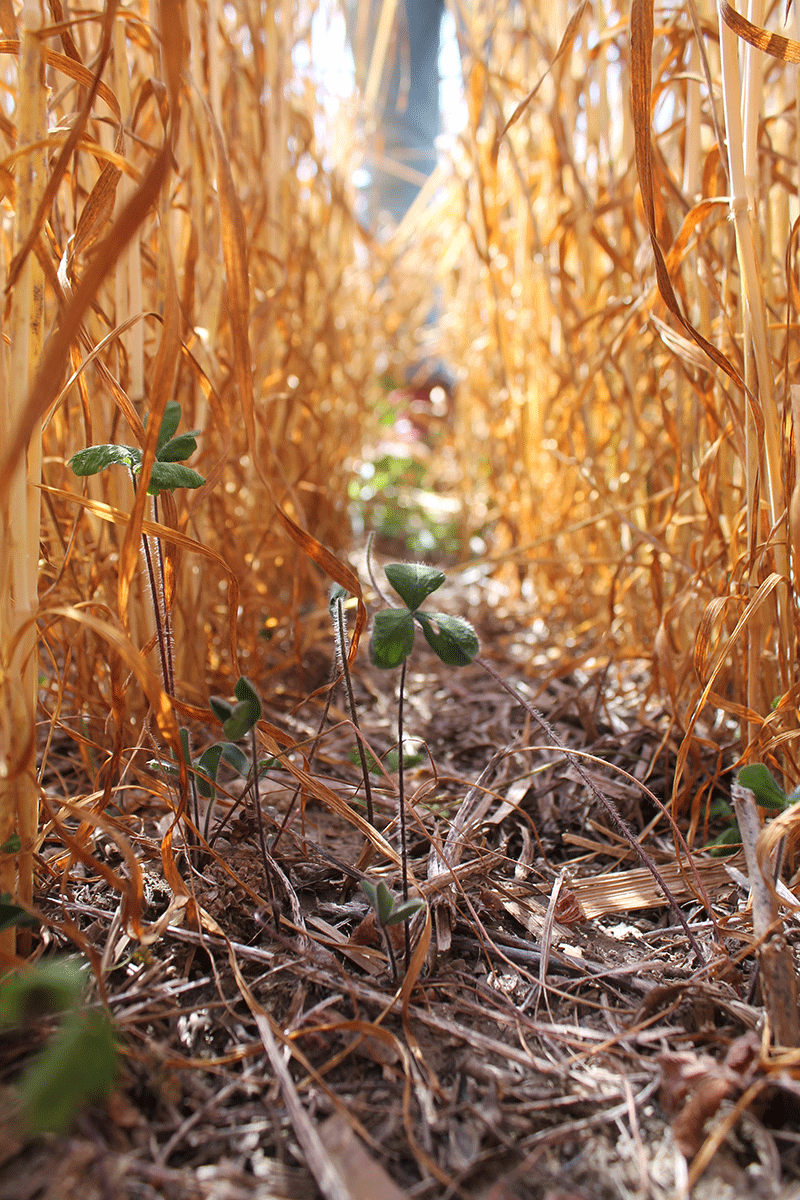Help for thin clover stands
UNEVEN ESTABLISHMENT ABOUT MORE THAN MOISTURE
WHEN RED CLOVER works, it’s an excellent way to add diversity to your crop rotation, provide a big nitrogen credit for next year’s corn crop, and add essential organic content to the soil.
PHOTO: SOIL MOISTURE LEVELS CAN VARY WIDELY EVEN WITHIN A FIELD, BUT RESEARCH SUGGESTS THIS IS ONLY ONE FACTOR LEADING TO UNEVEN RED CLOVER EMERGENCE.

But when it emerges poorly or unevenly, you have a potential management headache on your hands — and miss out on some of those great benefits.
A team of University of Guelph researchers have been looking into a growing trend over the past few seasons that’s seen patchy and non-uniform red clover stands in fields where growers have planted winter wheat.
Plant Agriculture professors Ralph Martin and Bill Deen, along with Ph.D. student Cora Loucks, are looking at environmental factors and on-farm management in a bid to find out how growers can get red clover back to being a more uniform, consistent performer.
So, why the big concern over red clover? Bottom line, growers aren’t getting that full return on their red clover investment — soil quality improvements or the nitrogen credit — if red clover stands are patchy or non-existent.
“If the red clover emerges uniformly, you should be able to apply less fertilizer for your following corn crop,” says Loucks. “But because of the uneven stands, growers are compensating by applying the same rate of nitrogen across their entire field — even to patches where the red clover has emerged and is also providing a nitrogen credit.”
As a result, parts of the field where red clover has emerged may contain a nitrogen surplus, wasting money and opening up the possibility of nitrogen losses as nitrous oxide emissions or nitrate leaching.
FACTORS IN FAILURE
In their search for answers to poor red clover stands, the research team looked at whether seasons where there are early or late season drought conditions could be a major factor.
Loucks points out that soil moisture levels can vary widely even within a grower’s field — something they thought could account for uneven red clover emergence.
The researchers used large and small trial plots and growth room trials to look at how low soil moisture would affect clover growth, by creating both early-season and late-season drought conditions.
“We were able to establish that drought has an impact on red clover growth at different points in the growing season,” explains Loucks.
She adds that while heavy drought can affect uniformity, it’s likely not the only element at play, but rather one in a combination of stresses that’s responsible.
Martin points to studies conducted at the University of Guelph’s Elora research station that suggest a lack of soil moisture could stem from years of simple corn-soy crop rotations that do away with forages and cover crops.
“At first blush, a cover crop seems like an expense. But we do know if you don’t have forages or cover crops and you do have simple corn-soy rotations, your soil organic matter is likely to go down,” says Martin. “That means your moisture retention is lower and in years with longer drought periods, you’re more at risk (to red clover failure).”
SINGLE VS. DOUBLE CUT DIFFERENCES
The researchers also looked at different red clover genotypes — a double cut and a single cut variety — to see whether there was a major difference in emergence and stand.
When grown as a forage, double cut red clover varieties tend to grow and accumulate biomass quickly to the point where growers can cut it a couple of times in the season. A single-cut variety, however, puts down larger roots and grows more slowly.
Loucks says that while they didn’t find a major difference in performance between two clover types, they now know what genetic characteristics they’re looking for. Red clover genotypes that can “hunker down” and go dormant quickly at the onset of drought stress will fare better and be able to regenerate their foliage from the crown.
“If we can find genotypes of red clover that are really good at regeneration, they might be the ones that best tolerate variable moisture conditions,” says Martin. “When we go from plenty to little moisture, the genotypes that can tolerate those periods of low moisture and then come back are going to be the types that we want.”
In the meantime, the researchers say that growers should focus on managing their soil by ensuring that it contains high organic content, which will allow the soil to hold more moisture during drought.
Ultimately, consistent emergence and success of a red clover cover crop isn’t due to any one thing.
“If you have good red clover emergence and you keep growing it, that provides more soil organic matter as well as better stability and moisture retention,” says Martin. It could be that areas in a field that are more difficult to establish the cover crop have other challenges (such as drainage issues or poor structure), but those areas will benefit, perhaps even more than better-producing areas, from the addition of red clover.
According to Martin, even if a red clover crop doesn’t quite pan out or emerges unevenly, growers can still make quick in-season adjustment and reap the benefits of having increased their soil organic and nitrogen content.
“Winter wheat comes off early enough — so that if your red clover has failed, or not emerged well, can still seed other crops, like oilseed radish or spring oats to fill in gaps.”
This research initiative received support from the Ontario Ministry of Agriculture, Food and Rural Affairs, as well as Grain Farmers of Ontario. •






















